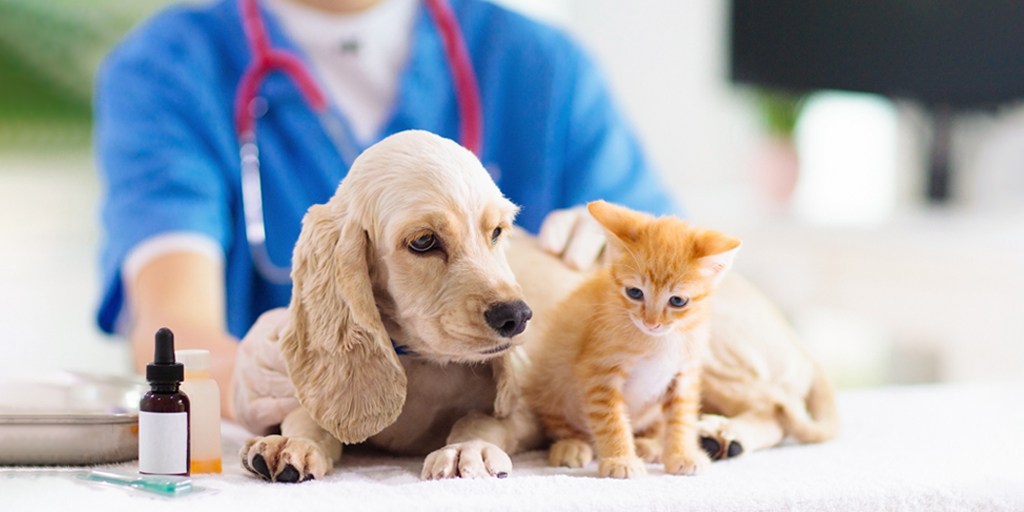Why You Should Get Cat Insurance
As a cat owner, ensuring your feline friend’s health and well-being is a top priority.

As a cat owner, ensuring your feline friend’s health and well-being is a top priority. Cats bring joy, companionship, and love into our lives, and their health is crucial to maintaining their quality of life. One way to protect your cat’s health and your finances is through cat insurance. This article explores why you should consider getting cat insurance, the benefits it offers, common misconceptions, and tips for choosing the right policy for your furry friend.
Understanding Cat Insurance
Definition and Purpose
Cat insurance is a type of pet insurance designed to cover the cost of veterinary care for cats. It works similarly to human health insurance, helping to offset the expenses associated with medical treatments and procedures. Cat insurance can be an invaluable tool in managing the financial impact of unexpected health issues, allowing you to focus on your cat’s recovery rather than worrying about the cost of care.
Types of Coverage
Cat insurance policies vary, but they generally fall into three main categories:
-
Accident and Illness Coverage: This is the most common type of cat insurance and covers the costs associated with treating injuries and illnesses. This includes everything from broken bones and infections to more serious conditions like diabetes and cancer.
-
Routine Care Coverage: Some policies offer routine care coverage, which helps with the costs of regular veterinary visits, vaccinations, and preventive treatments. This type of coverage encourages responsible pet ownership by making it more affordable to keep up with regular check-ups.
-
Wellness Plans: Wellness plans are often available as add-ons to accident and illness coverage. They cover a range of preventive services, such as dental cleanings, flea and tick prevention, and annual wellness exams.
How Cat Insurance Works
Cat insurance typically involves paying a monthly premium, which can vary based on factors such as your cat’s age, breed, and health status. In addition to the premium, you may also be responsible for a deductible—the amount you pay out-of-pocket before the insurance starts covering costs. Once the deductible is met, the insurance company will reimburse you for a percentage of the covered expenses, minus any co-payments specified in your policy.
Benefits of Cat Insurance
Financial Protection
One of the most significant advantages of cat insurance is financial protection. Veterinary care can be costly, especially in emergency situations or for chronic conditions. Without insurance, you could face substantial out-of-pocket expenses. For example, treatments for a major illness or injury, such as surgery for a broken leg or chemotherapy for cancer, can run into the thousands of dollars. Cat insurance helps mitigate these costs, making it easier to manage your cat’s health without financial strain.
Access to Better Care
With insurance coverage, you’re more likely to afford high-quality treatments and specialist care. For example, if your cat requires surgery or a visit to a veterinary specialist, insurance can help cover these expenses, ensuring that your cat receives the best possible care. This peace of mind allows you to focus on your cat’s recovery rather than worrying about how you will cover the costs.
Preventive and Wellness Care
Many cat insurance policies include coverage for routine care and wellness services. This encourages you to keep up with regular veterinary visits, vaccinations, and preventive treatments, which can contribute to your cat’s overall health and longevity. By having insurance that covers these routine services, you’re more likely to take a proactive approach to your cat’s health, potentially catching and addressing issues before they become more serious.
Common Misconceptions about Cat Insurance
Cost Concerns
A common misconception is that cat insurance is too expensive. While premiums can vary, insurance often becomes more cost-effective when you consider the potential out-of-pocket expenses for unexpected medical issues. Comparing the cost of insurance with potential vet bills reveals that insurance can be a wise financial investment, especially for high-risk breeds or older cats who may need more frequent medical attention.
Coverage Limitations
Some people worry that insurance coverage may be limited or not worth the expense. While it’s true that not all conditions or treatments are covered, most policies provide comprehensive coverage for a wide range of health issues. It’s important to carefully review the policy details to understand what is and isn’t covered. Common exclusions might include pre-existing conditions or certain elective procedures, but many insurers offer extensive coverage for a variety of medical needs.
Complexity of Claims
Another concern is the complexity of filing insurance claims. While it may seem daunting, the claims process is generally straightforward. Most providers have user-friendly systems for submitting claims, and many offer online portals where you can track the status of your claim. Understanding your policy’s terms and keeping detailed records of your cat’s medical care can make the process smoother.
Choosing the Right Cat Insurance Policy
Assessing Your Cat’s Needs
When choosing cat insurance, it’s essential to consider your cat’s specific needs. Factors such as age, breed, and existing health conditions can influence the type of coverage that’s most appropriate. For example, older cats or those with pre-existing conditions may require a policy that offers more comprehensive coverage. Breeds with known hereditary issues may also benefit from policies that cover breed-specific conditions.
Comparing Insurance Providers
Not all cat insurance providers are created equal. When comparing providers, look at key factors such as coverage options, premiums, and customer reviews. Some providers may offer more extensive coverage or additional benefits, such as 24/7 vet helplines or direct payment to veterinary clinics. Reading reviews from other pet owners can provide valuable insights into the provider’s customer service and claims process.
Reading the Fine Print
Before purchasing a policy, it’s crucial to read the fine print. Understand the details of what is covered, including any exclusions and limitations. Pay attention to the terms related to deductibles, co-payments, and reimbursement rates. Knowing these details helps you avoid surprises and ensures that you choose a policy that meets your expectations and needs.
Consulting with Your Vet
Your veterinarian can be a valuable resource when selecting cat insurance. They can provide recommendations based on your cat’s health and specific needs. Additionally, some vets have experience working with certain insurance providers and can offer insights into which policies are most effective for various health conditions.
Real-Life Examples
Case Studies
Consider the case of a Houston cat owner who faced a sudden emergency when their cat was diagnosed with a severe illness. The cost of treatment was significant, but having cat insurance allowed them to cover the expenses without financial hardship. With insurance, they were able to proceed with the recommended treatments, resulting in a successful recovery for their cat.
Personal Stories
Many pet owners have shared positive experiences with cat insurance. For example, one owner recounted how insurance helped cover the cost of an unexpected surgery after their cat was hit by a car. The insurance coverage alleviated the financial burden and enabled them to provide the necessary care for their pet’s recovery.
Final Thoughts
Cat insurance is a valuable tool for protecting your feline friend’s health and your financial well-being. It offers financial protection against unexpected medical expenses, access to high-quality care, and encouragement for preventive and wellness services. Despite common misconceptions about cost and coverage, cat insurance can be a wise investment in your cat’s health and your peace of mind.
When selecting a policy, consider your cat’s specific needs, compare providers, and read the policy details carefully. Consulting with your veterinarian can also provide helpful insights. By taking these steps, you can make an informed decision and ensure that your cat receives the best possible care throughout their life.
In summary, cat insurance is not just about preparing for emergencies—it’s about being proactive in your cat’s health and well-being. By investing in insurance, you can provide your feline friend with the care they deserve while managing the financial aspects of pet ownership effectively.
FAQ:
1. What is cat insurance?
Cat insurance is a type of pet insurance that helps cover the cost of veterinary care for cats. It works similarly to human health insurance, offsetting expenses related to medical treatments and procedures, including emergencies, illnesses, and sometimes routine care.
2. What types of coverage are available with cat insurance?
Cat insurance typically includes:
- Accident and Illness Coverage: Covers costs related to treating injuries and illnesses.
- Routine Care Coverage: Helps with the cost of regular veterinary visits, vaccinations, and preventive treatments.
- Wellness Plans: Available as add-ons to cover additional preventive services such as dental cleanings and flea prevention.
3. How does cat insurance work?
You pay a monthly premium for the insurance. You may also need to cover a deductible before the insurance starts paying. Once the deductible is met, the insurance company reimburses you for a percentage of covered expenses, minus any co-payments specified in your policy.
4. What are the benefits of having cat insurance?
- Financial Protection: Helps cover unexpected veterinary costs, reducing financial strain during emergencies or chronic illness.
- Access to Better Care: Enables you to afford high-quality treatments and specialist care for your cat.
- Preventive and Wellness Care: Encourages regular vet visits and preventive treatments, contributing to your cat’s overall health.
5. Is cat insurance expensive?
While premiums vary, cat insurance can be cost-effective when compared to potential vet bills for emergencies or chronic conditions. It’s often cheaper than paying out-of-pocket for significant medical expenses, especially for high-risk breeds or older cats.
6. What are common misconceptions about cat insurance?
- Cost Concerns: Insurance is often seen as too expensive, but it can be affordable and beneficial when considering the cost of potential vet bills.
- Coverage Limitations: Some believe coverage is too limited; however, many policies offer extensive coverage for various health issues. It’s important to understand exclusions and limitations.
- Complexity of Claims: Filing claims can seem complicated, but most providers offer user-friendly systems and clear instructions for submitting and tracking claims.
7. How do I choose the right cat insurance policy?
- Assess Your Cat’s Needs: Consider factors like age, breed, and health status.
- Compare Providers: Look at coverage options, premiums, and customer reviews.
- Read the Policy Details: Understand what is covered, including any exclusions or limitations.
- Consult with Your Vet: Get recommendations based on your cat’s health and needs.
8. Are there providers that specialize in cat insurance?
While many general pet insurance providers offer cat insurance, some companies may have specialized options or additional benefits. Researching and comparing providers can help you find one that meets your specific needs.
9. What should I do if my cat has a pre-existing condition?
Pre-existing conditions are typically not covered by insurance. However, some providers offer policies that cover new conditions or have specific provisions for managing pre-existing issues. Review policy details carefully to understand coverage options for pre-existing conditions.
10. How can I file a claim with cat insurance?
To file a claim, you generally need to submit a claim form along with detailed records of your cat’s medical care. Many insurers provide online portals for easy claim submission and tracking. Understanding your policy’s terms and keeping thorough records will help streamline the process.
11. Can cat insurance be customized?
Yes, many cat insurance policies offer customizable options, such as adding wellness plans or adjusting coverage levels. You can tailor the policy to fit your cat’s specific needs and your financial situation.
12. How do I find the best cat insurance policy for my cat?
To find the best policy, assess your cat’s needs, compare different insurance providers, read policy details carefully, and consult with your veterinarian. This will help you choose a policy that offers the right coverage and value for your cat’s health and your budget.
What's Your Reaction?




















